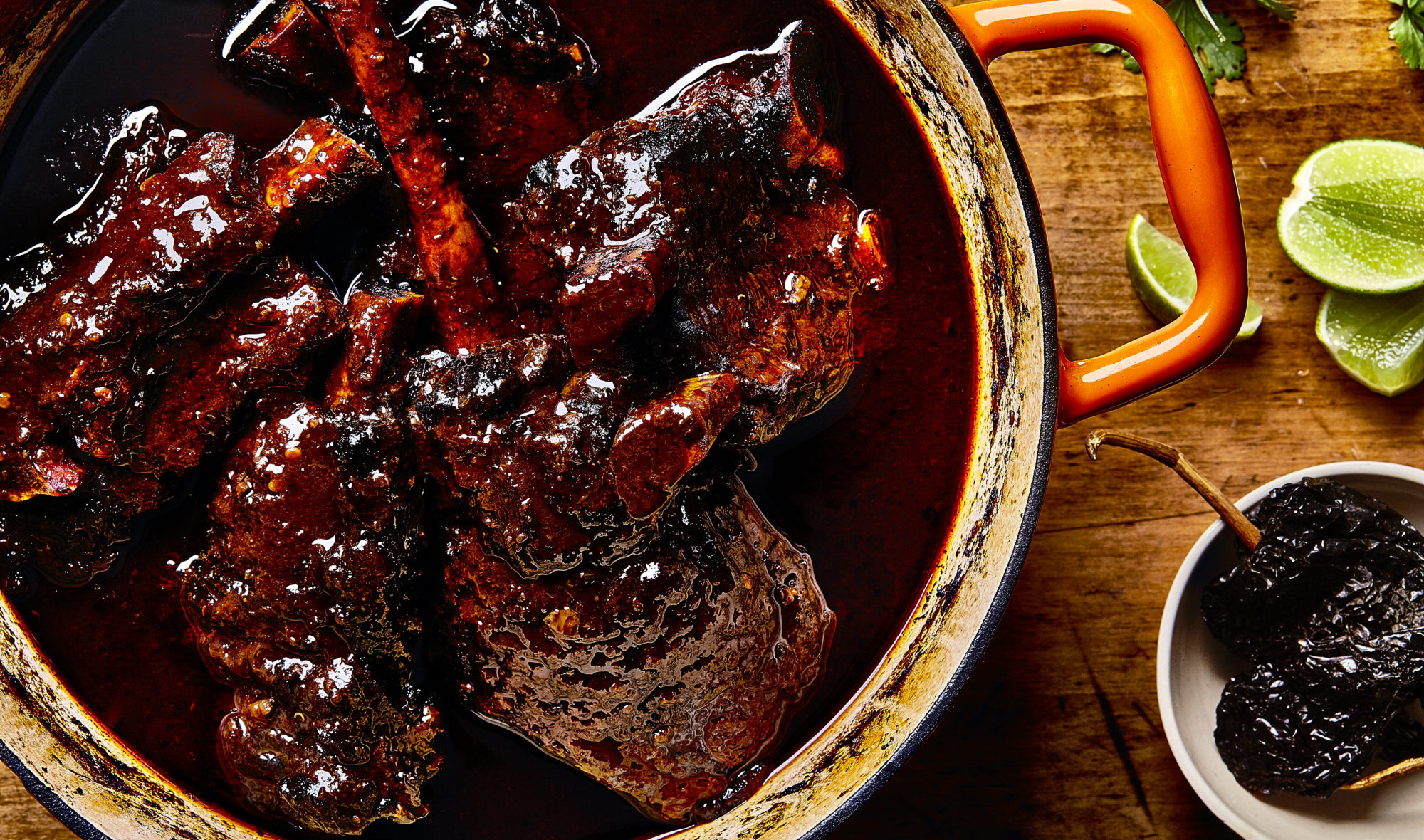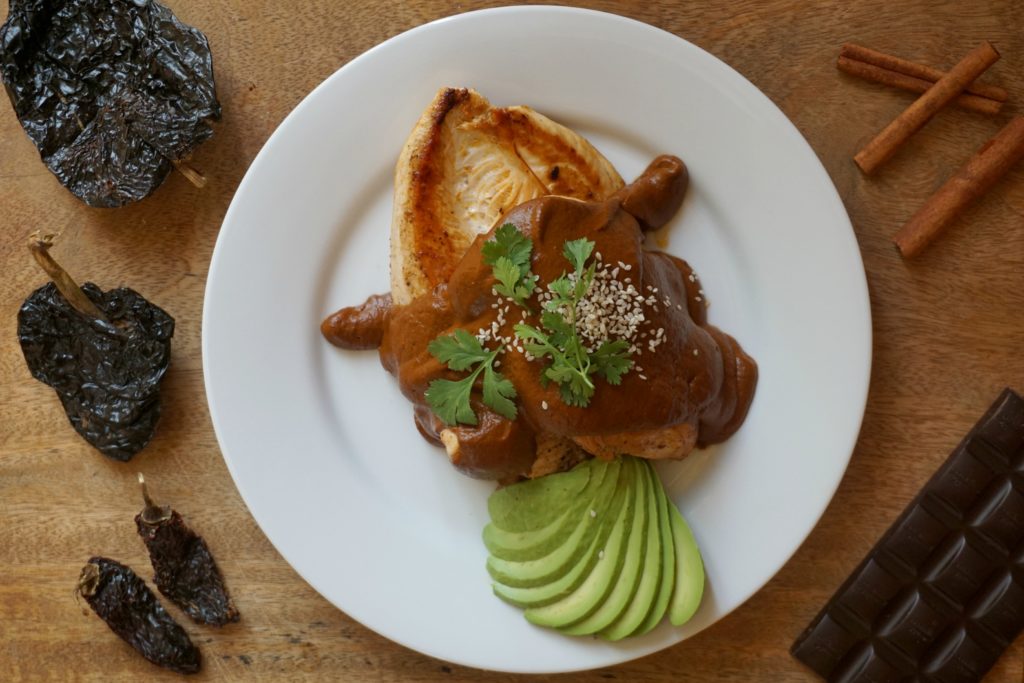
Join PN Level 2 for less than $9 USD/day! Affordable monthly payments now open.

Ancho chile is a dried poblano pepper, which is a mild chile pepper native to Mexico. Although ancho chiles are given a “mild” spice grade, this can vary from pepper to pepper. While most are mild, occasionally and unpredictably you may get a spicy one, so watch out! Ancho chile can be found either whole or in powder, and like many chile peppers, have a strong presence in Mexican culinary traditions. Whether whole or in powder, ancho chile has a rich, pungent flavor with notes cherry, raisins, and prunes. Relative to its weight, ancho chiles are also rich in a variety of carotenoids, which are compounds in the vitamin A family. However, like most spices, ancho chiles are used to provide flavor rather than nutrition. In other words, use ancho chile not because your body needs it, but because your mouth delights in it.
Ancho chile is a dried poblano pepper, which is a mild chile pepper native to Mexico. Peppers are dried primarily for the purpose of preservation, although drying also serves to concentrate flavors.
Poblano peppers are considered to be mild peppers, although occasionally and unpredictably, an especially hot poblano will appear, sometimes even on the same plant, in a crowd of mild poblanos.
The same surprise can occur in a package of dried ancho chiles – while most are likely to be quite mild, you may get the odd spicy one in the mix!
Like many chile peppers, anchos are native to Mexico, and have a strong presence in Mexican culinary traditions. Fresh poblanos are commonly eaten stuffed with ground meat, rice, beans, cheese, or a combination. Ancho chiles are often ground into a powder to create spice blends, or rehydrated and pureed into delicious sauces like the iconic chocolate-infused mole sauce.
Most ancho chiles come from Puebla, Mexico, where the peppers are both harvested and dried.
Ancho chile can be found either whole or in powder.
Whole ancho chiles are broad and almost heart-shaped, with a stiff stem at the top. Compared to other dried peppers, they are rather large – about three by four inches. They have glossy, wrinkly skin and are almost black, with a hint of mahogany.
Ancho chiles have a rich, pungent flavor with notes cherry, raisins, and prunes. Ancho chiles are considered to be mild in terms of spice level, although this can vary. While most anchos are quite mild, occasionally and unpredictably you may get a spicy one.
Ancho chile powder has a deep reddish brown color, and can be slightly milder in flavor than the whole dried version, especially if the powder is not freshly ground.
Ancho chile, in the amounts typically consumed, is not a significant source of any nutrients. However, relative to its weight, ancho chiles are rich in a variety of carotenoids, which are compounds in the vitamin A family.
Primarily, like most spices, ancho chiles are used to provide bold flavour rather than significant nutrition.
Ancho chiles may be found as whole dried peppers sealed in bags, or as a powder in glass jars, sachets, or loose in bulk bins.
However you choose to purchase it, shop at stores with a high turnover. Spices that stay on the shelves for long periods of time lose flavor and potency. For the boldest flavor and longest shelf life, try to find the whole dried peppers.
Good quality dried anchos, whether whole or powdered, should have wonderful pungent and fruity aroma, and a deep color. Dried whole ancho peppers will bend a bit before snapping. If they are very brittle and crumble easily, they may be old.
Ancho chile, whether whole or powdered, should be stored in a sealed container at room temperature, ideally away from heat and light, such as a closed cupboard or drawer away from the oven.
Like most spices, ancho chile won’t so much “go bad” as it will lose potency, which occurs after about six to eight months for the powder, and about a year for the whole peppers.
Powdered ancho chile is ready to be used as-is, added to salsas or guacamole, sprinkled over cooked eggs, or slow cooked with beans, poultry, pork, or beef.
Whole dried ancho chiles require a bit of preparation before using. They can either be minced dry, or reconstituted.
If you are planning to mince a dried ancho chile, first cut off the stem, and remove the seeds inside. Then, chop the pepper into tiny pieces and sprinkle into your recipe of choice.
Dried ancho chiles can also be reconstituted, thereby softening them so they are easier to chop or puree before mixing them into recipes. To do this, boil some water, and then pour it into a large bowl. Place the anchos in the bowl, ensuring that they are fully immersed, and let them sit for about 20 minutes. Then, drain the water, and pat the anchos dry. Cut the tough stems off, scrape out the seeds, and chop the softened peppers into desired pieces. They can then be added to salsas, marinades, soups, or other dishes.

Mole is a traditional Mexican sauce, typically with a base of lightly charred chiles, toasted nuts or seeds, spices, dried fruit, and chocolate. This unique and nuanced sauce is delicious over roasted poultry or beans, and will please any culinary adventure-seeker.
Prep Time: 30 minutes Cook Time: 30 minutes Yield: 4-6 servings
First toast, then soak your dried chiles: Heat a large skillet over high heat. When it’s hot, place the dried chiles in the pan and press them down slightly with a spatula. Scorch them slightly on both sides. This will take about a minute or two for both sides; the peppers will become fragrant and develop brown spots where they have charred. Once they are toasted, immerse the dried anchos and chipotles in boiling water and let sit for 30 minutes. Place a jar or bowl on top of the chiles if you need to, to keep them submerged.
As the chiles are soaking, add olive oil, sesame seeds, and cumin seeds to a large skillet over medium-high heat. Toast the seeds lightly, until fragrant and sesame is golden.
Immediately after the seeds begin to toast, add onion, garlic, bell pepper, and salt, and stir to combine. Cook until onions and pepper have softened, stirring frequently. Once the vegetables have softened, remove from heat and set aside.
Check on your soaking chiles, and if the soaking time has elapse and they are soft, remove them from the liquid. Be sure not to discard the soaking liquid. This is a key ingredient. Cut off the coarse stems and remove the seeds from the chiles, then chop them coarsely.
Add the chopped chiles, and the soaking liquid to a blender, along with the cooked vegetables. To this, add cinnamon, clove, tomato paste, raisins, and chocolate. Process until smooth.
Mole sauce goes well over chicken, turkey, or even beans. Serve with rice, avocado, and fresh cilantro. Enjoy!
Precision Nutrition’s Encyclopedia of Food expands every single month as we highlight new foods and showcase beautiful food photography. If you’d like to stay up to date, simply click this link. From there, we’ll send you a FREE copy of our recipe book. We’ll also let you know when new and delicious foods are added to the site.
Ancho chile is a dried poblano pepper, which is a mild chile pepper native to Mexico. Although ancho chiles are given a “mild” spice grade, this can vary from pepper to pepper. While most are mild, occasionally and unpredictably you may get a spicy one, so watch out! Ancho chile can be found either whole or in powder, and like many chile peppers, have a strong presence in Mexican culinary traditions. Whether whole or in powder, ancho chile has a rich, pungent flavor with notes cherry, raisins, and prunes. Relative to its weight, ancho chiles are also rich in a variety of carotenoids, which are compounds in the vitamin A family. However, like most spices, ancho chiles are used to provide flavor rather than nutrition. In other words, use ancho chile not because your body needs it, but because your mouth delights in it.